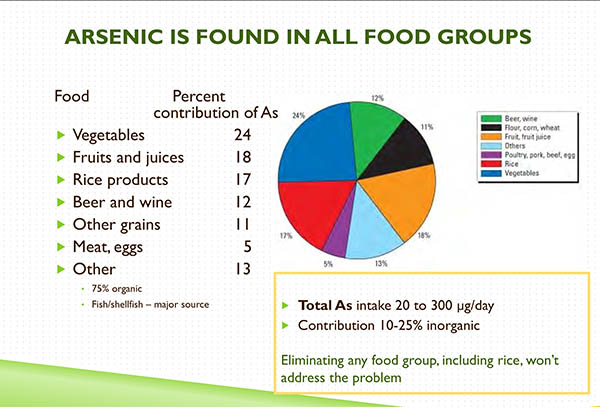Food, Rice And Arsenic: What Health Professionals Need To Know
A message from American rice farmers
America’s rice farmers and rice companies are fully committed to providing healthy and nutritious food to consumers; and although there is no scientific evidence of a public health risk as a result of the trace amounts of arsenic found in U.S. rice, we will continue to work with FDA to ensure the U.S. rice supply meets any established health standards.
Arsenic is everywhere in nature. It is one of many natural elements found in air, water, and soil, and virtually all crop plants take up arsenic. There are trace amounts of arsenic in nearly all of the foods and beverages we consume, including vegetables, fruits, juices, rice, grains, seafood, meat, and wine. Some believe pesticides are to blame, however, U.S. rice farmers do not use any arsenical pesticides on the rice they grow.
How People Are Exposed to Arsenic
People are most likely to be exposed to inorganic arsenic through drinking water and to a lesser extent through various foods. Water sources in some parts of the United States have higher naturally occurring levels of inorganic arsenic than other areas. Other sources of inorganic arsenic exposure include contact with contaminated soil or with wood preserved with arsenic.
People are exposed to organic arsenic by consuming seafood.

Known Health Benefits Of Rice
Recent research shows that people who eat rice
- Consume less sugar and saturated fat
- Have a lower risk of high blood pressure and obesity
- May be less likely to develop heart disease and type II diabetes
- Consume more Fe, K, and dietary fiber – nutrients of concern
- Consume more lean meat, vegetables and grains
Does organic rice have less arsenic?
No. Regardless of whether the farming method is conventional or organic, rice, like just about every other crop plant, takes up trace amounts of arsenic
ADDITIONAL RESOURCES